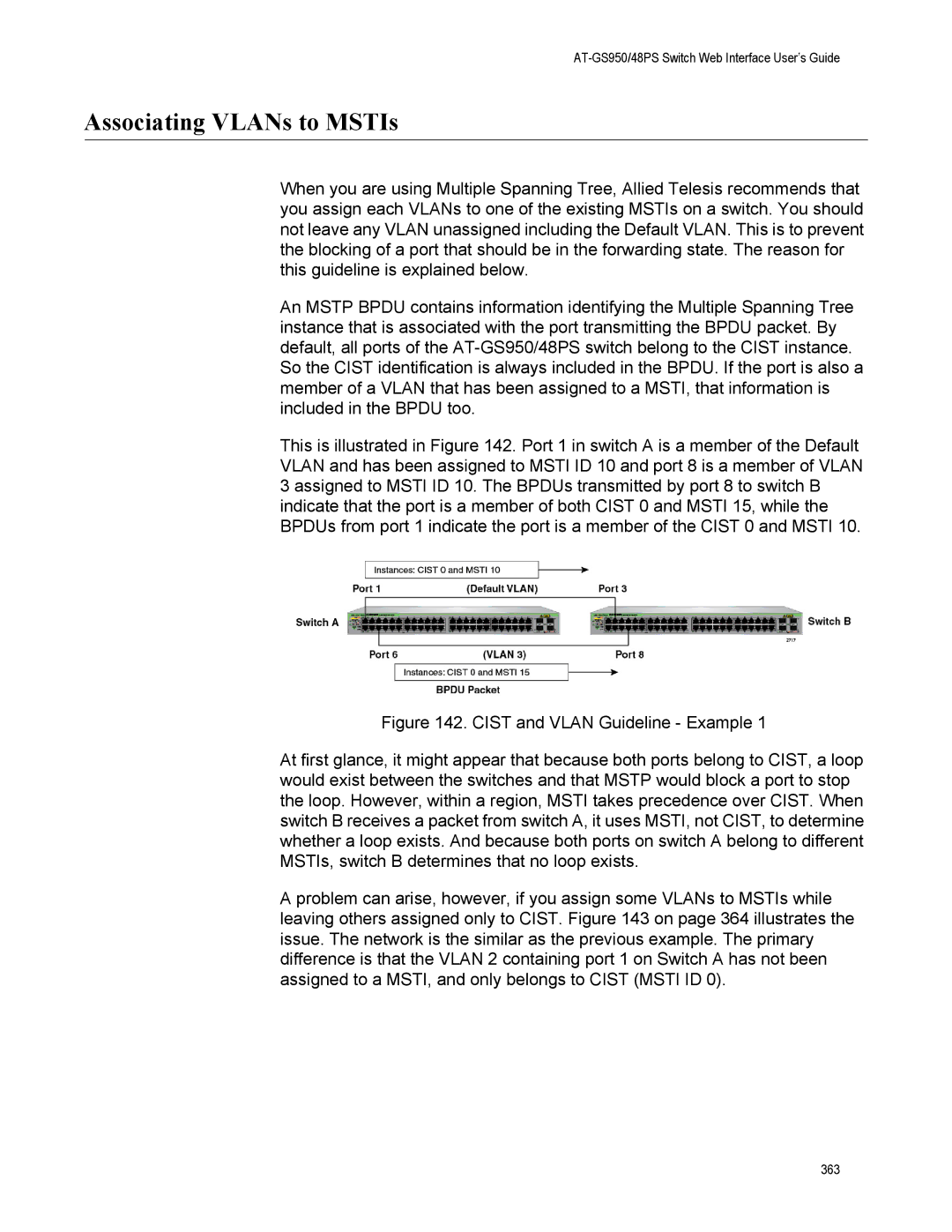
AT-GS950/48PS Switch Web Interface User’s Guide
Associating VLANs to MSTIs
When you are using Multiple Spanning Tree, Allied Telesis recommends that you assign each VLANs to one of the existing MSTIs on a switch. You should not leave any VLAN unassigned including the Default VLAN. This is to prevent the blocking of a port that should be in the forwarding state. The reason for this guideline is explained below.
An MSTP BPDU contains information identifying the Multiple Spanning Tree instance that is associated with the port transmitting the BPDU packet. By default, all ports of the
This is illustrated in Figure 142. Port 1 in switch A is a member of the Default VLAN and has been assigned to MSTI ID 10 and port 8 is a member of VLAN 3 assigned to MSTI ID 10. The BPDUs transmitted by port 8 to switch B indicate that the port is a member of both CIST 0 and MSTI 15, while the BPDUs from port 1 indicate the port is a member of the CIST 0 and MSTI 10.
Figure 142. CIST and VLAN Guideline - Example 1
At first glance, it might appear that because both ports belong to CIST, a loop would exist between the switches and that MSTP would block a port to stop the loop. However, within a region, MSTI takes precedence over CIST. When switch B receives a packet from switch A, it uses MSTI, not CIST, to determine whether a loop exists. And because both ports on switch A belong to different MSTIs, switch B determines that no loop exists.
A problem can arise, however, if you assign some VLANs to MSTIs while leaving others assigned only to CIST. Figure 143 on page 364 illustrates the issue. The network is the similar as the previous example. The primary difference is that the VLAN 2 containing port 1 on Switch A has not been assigned to a MSTI, and only belongs to CIST (MSTI ID 0).
363
